This article was co-authored by Pippa Elliott, MRCVS. Dr. Elliott, BVMS, MRCVS is a veterinarian with over 30 years of experience in veterinary surgery and companion animal practice. She graduated from the University of Glasgow in 1987 with a degree in veterinary medicine and surgery. She has worked at the same animal clinic in her hometown for over 20 years.
There are 8 references cited in this article, which can be found at the bottom of the page.
This article has been viewed 25,804 times.
A corneal ulcer refers to damage to the clear membrane layer that forms the front of the eye.[1] It is important to know if your dog has a corneal ulcer because some untreated ulcers can deepen. If enough of the surface of the eye is eroded, the eye may rupture and the dog become blind in that eye. Knowing what to look for can help you diagnose a corneal ulcer in your dog and help her receive proper care.
Steps
Recognizing the Symptoms of a Corneal Ulcer
-
1Be mindful of your dog rubbing her eye. Ulcers can be difficult to see with the naked eye. Since corneal ulcers are painful, your first clue that there is a problem is that the dog's eye will bother her because it hurts. A typical sign of a painful eye is rubbing at the eye.[2]
- Your dog might do this by rubbing the affected side of the face along the ground or rubbing at the eye with a paw.
-
2Monitor for squinting. In addition to rubbing her eye, your dog might squint with that eye, holding it partially closed. To determine if your dog is squinting, look at the dog straight on and compare the size of both eyes. If one eye looks smaller than the other, then the dog may be squinting.Advertisement
-
3Look for watery eyes. The discomfort and pain may also cause the eye to water. Sometimes the area beneath the affected eye may be wet or damp.
-
4Check for red or cloudy eyes. If the dog has a corneal ulcer, the white of the eye may look reddened. Another sign is that the normally clear surface of the cornea may take on a cloudy or milky appearance. This might look like a film over the eye.[3]
-
5Look for discharge. A corneal ulcer may also cause a discharge from the eye. Your dog may exhibit a bloody discharge or a pus-filled discharge. This discharge may accumulate in the corner of the eye, nearest her nose.
-
6Notice eye sensitivity. Because of the pain and discomfort, your dog may display a sensitivity to light. She may shy away from bright lights, or squint when in well lit areas. Your dog may also keep the affected eye closed.[4]
-
7Know that these symptoms are nonspecific. All of these signs are nonspecific. This means that reasons other than a corneal ulcer can cause similar symptoms, such as allergies, infection, trauma, or inflammation.
- However, they are all signs of ocular discomfort so regardless of the cause, the dog needs to see a vet in order to diagnose the problem and be relieved of pain.
Diagnosing a Corneal Ulcer
-
1Look at your dog's eye. If you have good eyesight, then it can be useful to closely inspect the surface of the eye to look for broken or shattered reflections. If a corneal ulcer is present, the smooth surface of the cornea will have a disruption. This may be visible in good light and look like a jump, shatter, or kink in a reflection.
- If the surface of the eye looks misty, frosted, or you can see jumps in reflections, then the eye needs checking by a vet.
-
2Take your dog to the vet. If you believe your dog has eye trauma, take her to the vet. The vet will look at both eyes to determine which eye is the problem, and how inflamed or sore it is.[5]
- The vet will also examine the eyelids and eyelashes to look for anything that might be rubbing on the surface of the cornea, such as an inturned eyelash, which could rub and cause an ulcer.
-
3Get a dye test. The definitive test for a corneal ulcer is a test which uses a special dye that changes color in the presence of damaged corneal epithelia. The dye, fluorescein, is orange but turns green and stains exposed epithelia.[6]
- The vet will place a few drops of fluorescein into the eye, and wipe away the excess with dampened cotton wool. The eye is then observed both with and without magnification. A corneal ulcer will stain green, and will show the size, depth, and shape of the corneal ulcer.
-
4Ask for a UV light test. Sometimes pinpoint ulcers can be difficult to see, even with fluorescein. If this is the case, your vet can perform a UV light test on your dog. Your vet will switch off the lights so the room is dark, and then he'll shining a UV light source onto the eye. This will make the fluorescein dye fluoresce, which makes it easier to see.[7]
-
5Get your dog the proper treatment. Some ulcers heal spontaneously within five to seven days. Treatment is needed to prevent secondary infections, which could slow healing, and because it's not possible to know if the ulcer will heal on its own. The vet will probably give your dog eye drops containing antibiotics that should be used two to four times a day, or drops which form a protective bandage layer over the surface of the cornea.[8]
- It is important to prevent the dog from rubbing her eye, so wearing a cone collar may be necessary. Keeping follow-up appointments is essential since the health of your dog's eye is at stake.
- A small percentage of ulcers are resistant to treatment and may require a surgical procedure.
Understanding Corneal Ulcers in Dogs
-
1Understand what a corneal ulcer is. The cornea is a clear membrane made up of layers in the eye that lets light pass unimpeded into the eye for it to be processed. An ulcer is damage to the outer layer of the cornea. Untreated, this can erode deeper and if it eats through one of the inner layers, the eye may perforate.[9]
- A shallow ulcer is the equivalent of a scrape or scuff to your skin. The deeper the ulcer, the more layers are damaged.
-
2Identify the causes. Certain conditions can cause your dog to get a corneal ulcer. Scratches and other injury to the eye is the most common reason ulcers arise. Ingrown eyelashes, dirt and other material in the eye, and chemicals can injure the eye and cause an ulcer. Smoke and infection also can cause corneal ulcers.[10]
-
3Watch active dogs closely. Since eye trauma can happen to any dog, you need to watch your dog in certain conditions. Dogs that get excitable easily can be at risk of injuring their eye. Dogs that fight, especially cats, can get an ulcer. Dogs who spend a lot of time outdoors running through underbrush, like hunting dogs, can injure their eyes.
-
4Know which breeds are at a higher risk. All dogs can get a corneal ulcer. However, certain breeds with prominent eyes and flat, smooshed faces are at a higher risk because of the tendency of eyelashes to irritate their corneas. The breeds at most risk are:[11]
- Pugs
- Bulldog
- Boston Terrier
- Boxer
- Shih Tzu
- Pekingese
References
- ↑ https://www.ethosvet.com/blog-post/corneal-ulcers-in-dogs/
- ↑ https://www.pdsa.org.uk/pet-help-and-advice/pet-health-hub/conditions/eye-ulcers-corneal-ulcers-in-dogs
- ↑ http://www.petmd.com/dog/conditions/eyes/c_dg_Keratitis_Ulcerative#
- ↑ https://www.pdsa.org.uk/pet-help-and-advice/pet-health-hub/conditions/eye-ulcers-corneal-ulcers-in-dogs
- ↑ Spontaneous chronic corneal epithelial defects in dogs. Bentley. JAAHA 41 (3)
- ↑ http://www.petmd.com/dog/conditions/eyes/c_dg_Keratitis_Ulcerative#
- ↑ https://emergency-vets.com/species/dogs/dog-squinting-eye-corneal-ulcer/
- ↑ https://www.citybeachvet.com.au/corneal-ulcers/
- ↑ https://vetspecialists.co.uk/fact-sheets-post/non-healing-indolent-corneal-ulcers-in-dogs-fact-sheet/
About This Article
To diagnose a canine corneal ulcer, watch for common symptoms like eye rubbing, squinting, watery eyes, red or cloudy eyes, eye discharge, and sensitivity to light. If your dog has any of these issues, take it to the vet as soon as possible so they can diagnose it and recommend treatment. At the vet, be prepared for them to give your dog an eye exam to look for any trauma on its eyes. They may also give your dog a dye test by placing orange dye in its eye. If part of your dog’s eye turns green, this could mean there is an ulcer in its eye that needs treatment. Once your dog has been diagnosed, they will likely give you antibiotic eye drops to administer 2-4 times each day. To learn how to determine if your dog is at risk for corneal ulcers, read more from our Veterinary co-author.
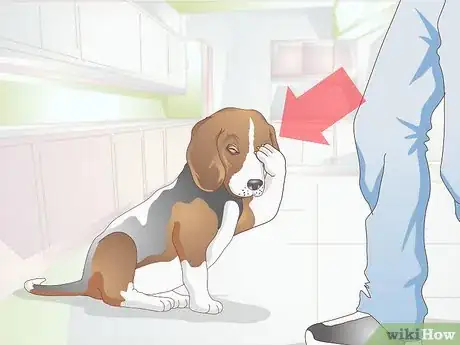
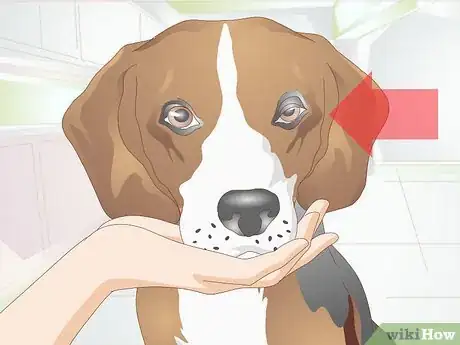
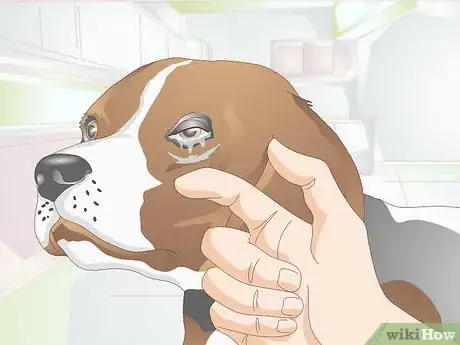

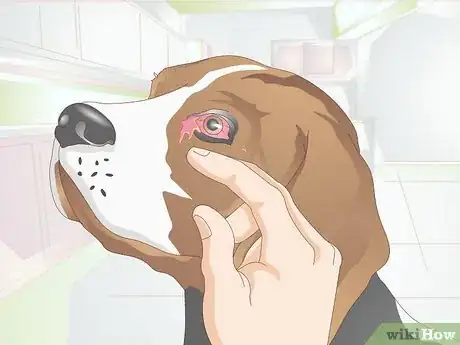
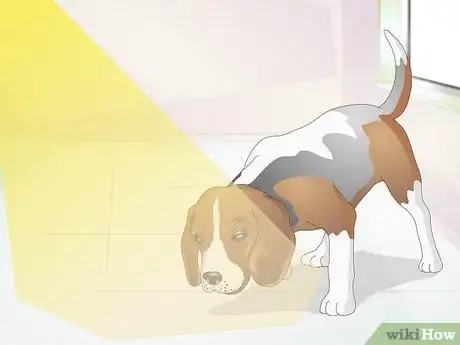


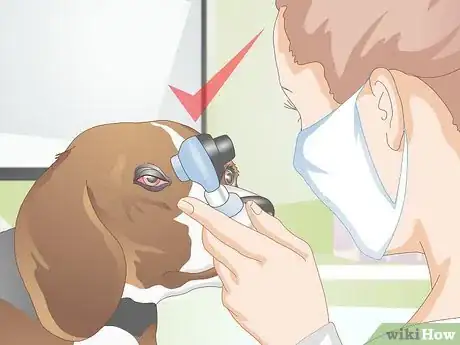
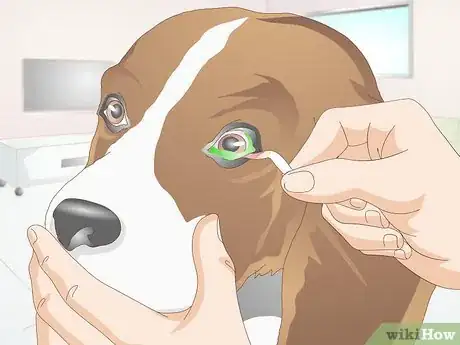
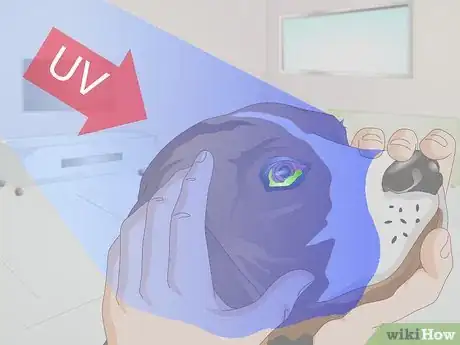
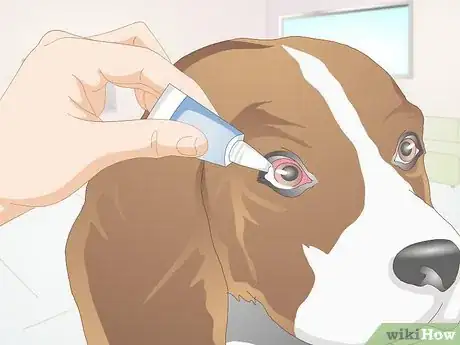
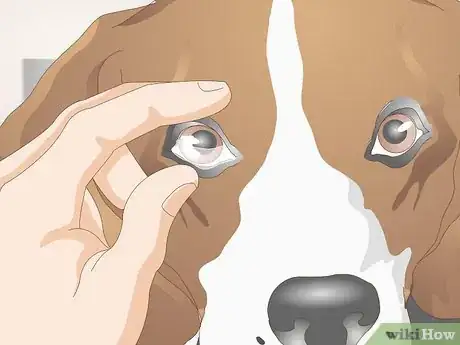
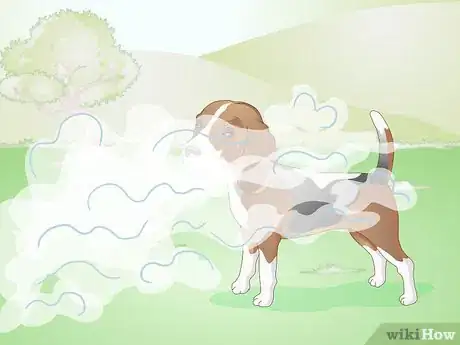
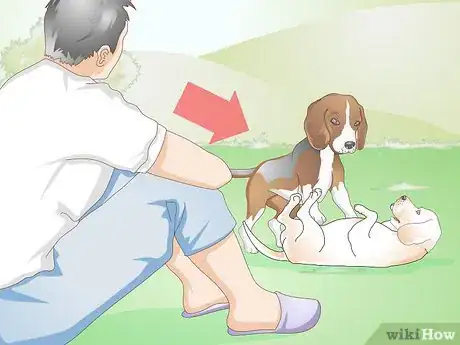
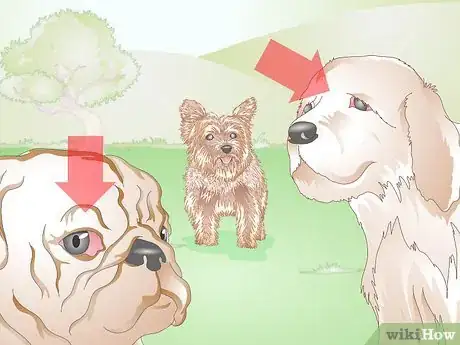
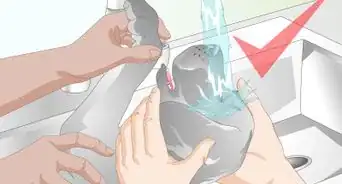

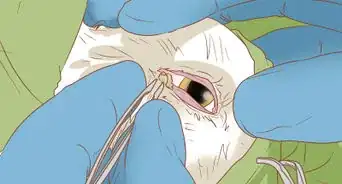
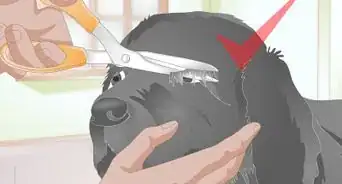




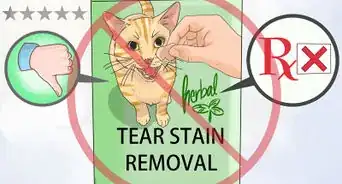

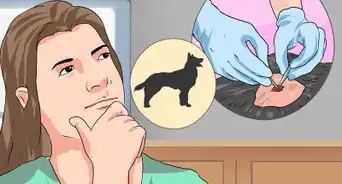









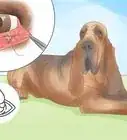

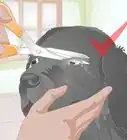



































Medical Disclaimer
The content of this article is not intended to be a substitute for professional medical advice, examination, diagnosis, or treatment. You should always contact your doctor or other qualified healthcare professional before starting, changing, or stopping any kind of health treatment.
Read More...